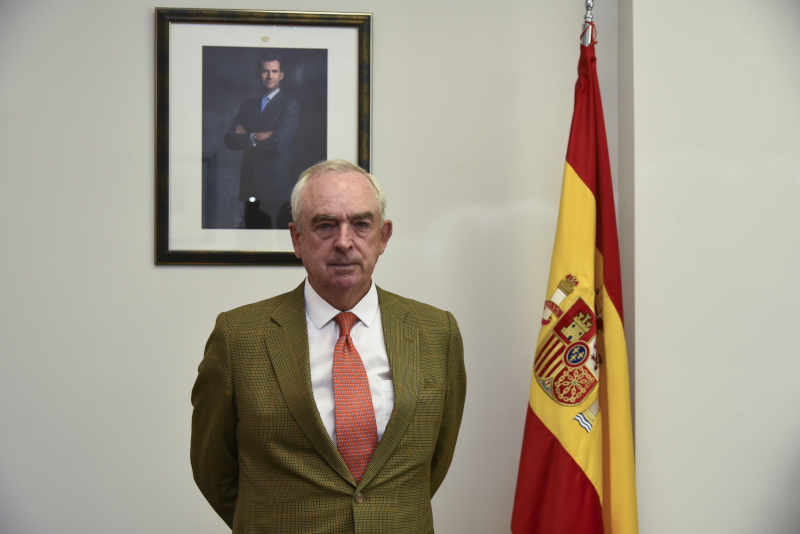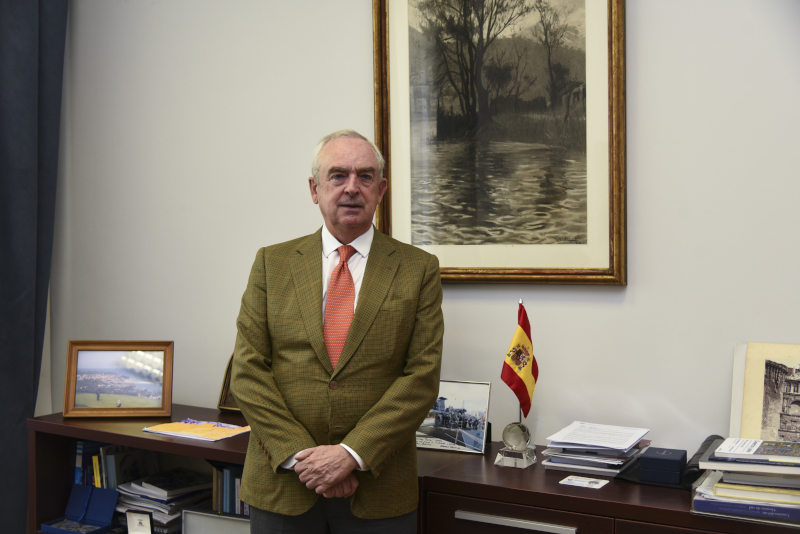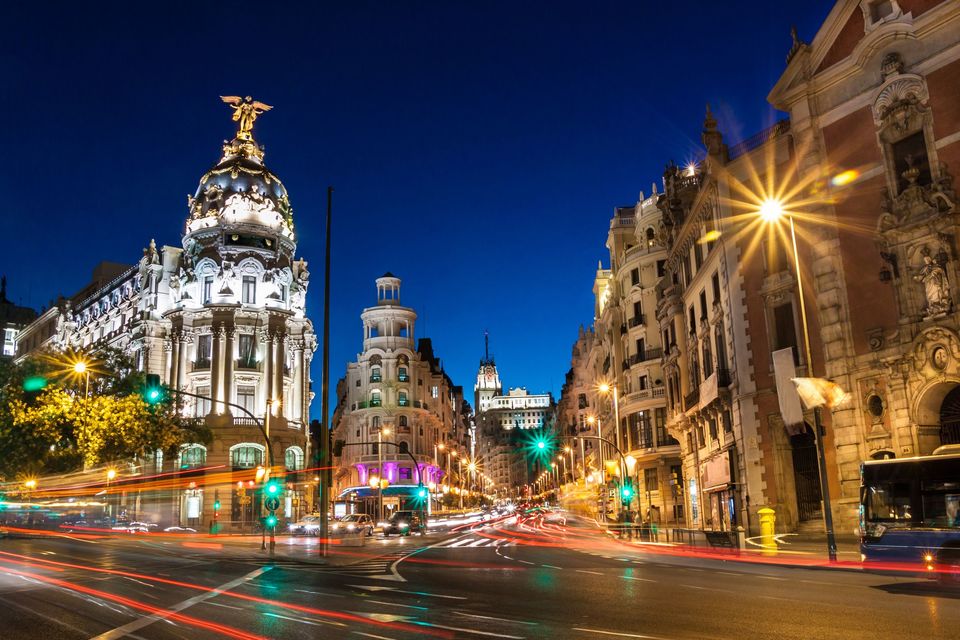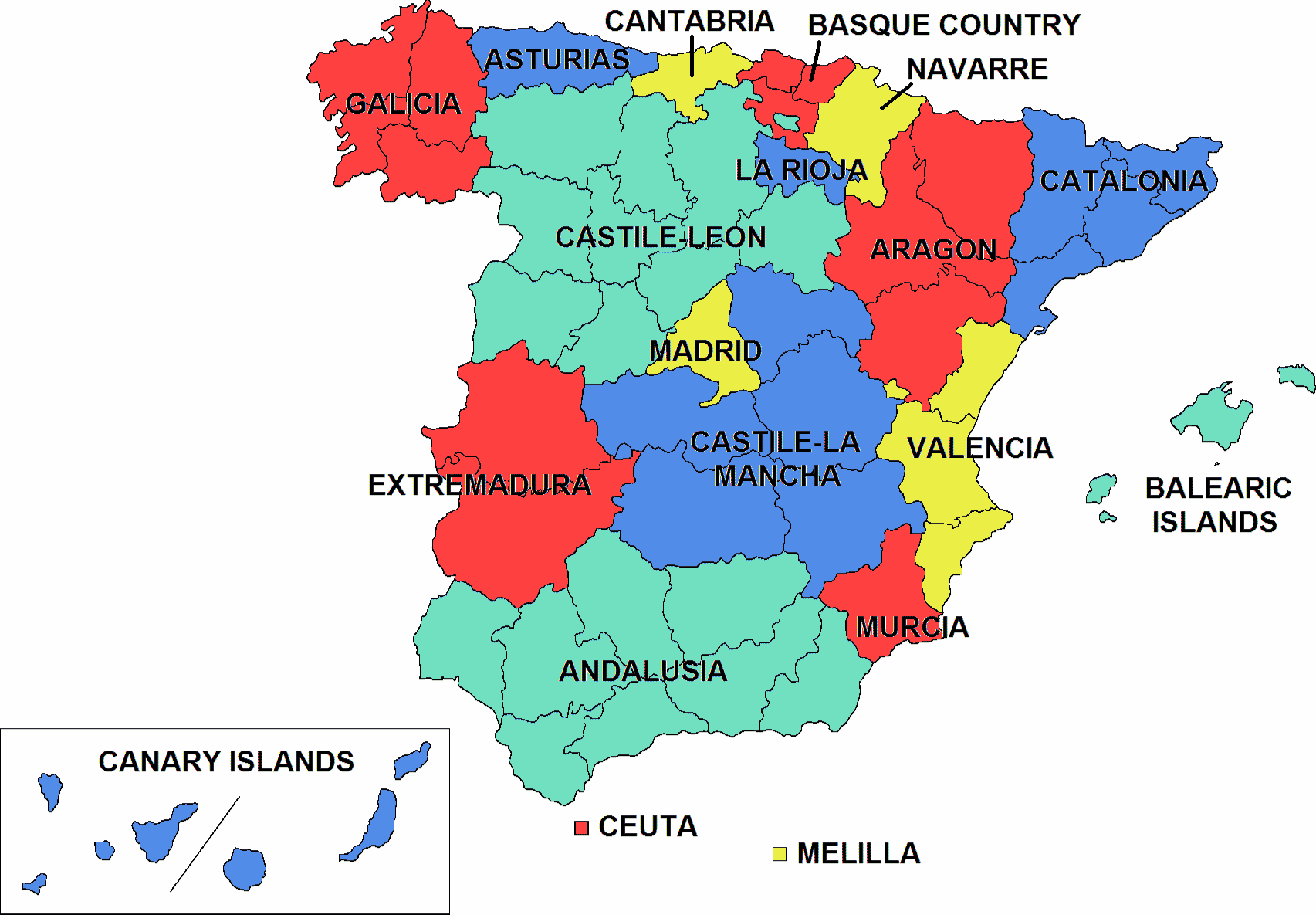Text: Žikica Milošević
After close to three years in the office, H.E. Miguel Fuentes Suárez, the ambassador of one of the friendliest and most popular countries in Serbia – the Kingdom of Spain, talks about economy, politics and culture, noting the striking similarities in the turbulent past and similar joyful mentalities of our two countries.

Spain is a model of a federal country. Is this maybe the reason why all crises are, in the final instance, resolved in accordance with the law?
The Spanish Constitution from 1978 established a system of great political and administrative decentralization with the creation of 17 Autonomous Communities, each of them having their own government and parliament. Every Autonomous Community holds its own elections at which they elect members of that Autonomous Parliament which then, in turn, appoints the Autonomous Government. However, the Constitution does not define Spain as a federal state, like Germany, but an “autonomous” one. The distribution of power between the Spanish State and the Autonomous Communities has been working reasonably well in the light of absolute respect of the decisions made by the Constitutional Court. Spain makes a permanent effort to uphold the principles of the rule of law, democratic freedoms and a strict separation of powers with absolute independence of the Judicial Power, even when the judicial resolutions have had political repercussions of great importance.
The Spanish federalism has built a diversified country with several centres of economic power. Unitary countries almost always have to face the problem of economic concentration in the centre. Can Spain help by sharing its own experience?

Historically speaking, several industrial zones have been developed in Spain since the 18th century, mainly around Barcelona, the Basque Country and, to a lesser extent, Asturias. These regions have traditionally shown a greater international connection, facilitated by their access to the sea. Madrid and the current Valencian Community are two Spanish regions that have developed industries somewhat later. The industrial specialization has therefore existed long before the 1978 Constitution and has continued during democracy. The Spanish experience is based on its own historical and geographical peculiarities, so it is not easy to extrapolate it to other realities. However, it is true that the existence of several industrial nuclei has ensured the balance the economic power between different areas of the country.
Following Franco’s rule, Spain became a modern and democratic country in quite a short period. In almost 30 years after Communism and wars, many countries in Eastern Europe are yet to find their own way. What was the Spanish method?
Spain has experienced an extraordinary change in the last four decades. From the economic point of view, the so-called Pacts of La Moncloa of 1977 served to put all the political forces in agreement on the need to liberalize and modernize the Spanish economy through important reforms that introduced a greater competition, greater external openness, greater gravity of the private sector, a better fiscal and labour system, and price liberalization, among others. Joining the EU in 1986, which is something that has always been supported by the majority of Spaniards, has entailed a harmonization of policies, the continuation of opening of our trade and foreign investments. The structural funds that Spain received for infrastructure and rural development and the subsequent adoption of the euro, as one of the founding countries, have all been fundamental for the economic progress of our country, which is the fifth strongest economy in the EU. But we would not like to impose our solutions to other countries. Everyone should find their own way.

After the 2008 economic crisis, Spain is now again strong. What was the formula that you used but others did not?
To get out of this great crisis and resume the growth as it had been in recent years, Spain – its citizens and companies – has had to make enormous sacrifices. In coordination with the European Union, various reforms were carried out, including the important process of fiscal consolidation, which reduced the public deficit from 10.5% of GDP in 2012 to 3.1% of GDP. The public deficit in 2018 is expected to be below 3% of our national GDP. The reforms were implemented in the banking sector with the aim of adjusting its size, recognizing the losses, increasing its capitalization, improving liquidity ratios, and introducing a greater flexibility to the labour market. A particular highlight in the economic recovery of Spain has been the prominence of the foreign sector. The Spanish competitiveness has allowed external demand to pull out of the economy, to the point that it is the first time that a steady growth of GDP in Spain coincided with the current account surpluses (five consecutive years, reaching 1.9% of GDP in 2017). The recovery in the main markets for Spain has facilitated improved exports. The low interest rates and the low price of crude oil have also favoured the improvement. In this process of economic recovery, tourism has been another forte of the Spanish economy – the number of tourists who have visited Spain has reached 81.8 million in 2017, which places Spain second in the world.
Spain was not traditionally present in our region, because it has mainly been focusing on Latin America. Now, Spain seems ready to invest in Eastern Europe. Where is Serbia’s place in all of that?
Indeed, Spanish companies have traditionally looked to Latin America, to large, nearby countries in the EU and, more recently North Africa and Asia. Eastern Europe was discovered as the integration in the EU of a large group of these countries has provided more information, a better environment for business with the harmonization of regulations, a total opening of the market and has revealed business opportunities derived from the needs of infrastructures, equipment, industrial and consumer goods in those countries. The stronger economic link between Serbia and the EU, and more importantly, its EU accession process are generating a bigger interest of Spanish companies in this country, as reflected in the figures of our bilateral trade, which reached 411 million euro in 2017, with a growth of 76% in the last five years. I am a fervent Europeanist and I think Serbia inspires confidence in investments nowadays.

The people of Serbia have a very positive attitude towards Spain, but, except for the Cervantes Institute, there is not much Spanish cultural and diplomatic activity here. Can that be changed?
In the economic sphere, the work on disseminating economic, general and sectoral information about concrete business opportunities on Serbia, as well as the provision of personalized services to Spanish companies that wish to do business in Serbia, is less visible but is effective. The proof of this lies in the evolution of the bilateral trade figures that I have already mentioned. Furthermore, we have been carry out more important activities in some sectors, such as participation in the International Agricultural Fair of Novi Sad, where, in 2018, Spain had a national pavilion for the third consecutive year.
On the other hand, the cultural and educational relations between Spain and Serbia are remarkable, although obviously, they can be strengthened, and we hope to contribute to this, on the Embassy’s side. There is a great interest in the Spanish language and cultures in Serbia. The work of the Cervantes Institute, both in teaching Spanish and in its strong cultural activities is a good example of this. So is the work of the Hispanists in Serbian universities, the presence of two Spanish readers in Serbian universities (who teach Castilian and Catalan), and the numerous university exchanges, especially in the framework of the Erasmus programme.
Spanish culture is very present in the Serbian cultural life; our artists and creative people often participate in a number of cultural programmes at festivals and cultural events in Serbia, and are frequently supported by different Spanish institutions. Last but not least, Serbia is one of the countries that receive the biggest subsidies for the translations of the Spanish written word from our Ministry of Culture, which says a lot about the great interest that Serbian population has in our literature.
What are the Embassy’s plans for the future?
In the economic area, our objective is to continue investing effort in increasing the knowledge of both countries by the companies of the other. With this in mind, our Embassy’s Economic and Commercial Office, together with the Spanish Agency for Exports and Investments (ICEX), will organize the Spanish-Serbian Business Meeting in Belgrade on October 23rd and 24th of this year. The objective is to inform the delegation of participating Spanish companies (20 for now, representing the sectors like environmental protection, transport, engineering, construction, agriculture and livestock, fashion, hotels, etc.) about the existing business opportunities in Serbia through the direct contact with authorities, Serbian companies and international organizations. At the same time, we want to promote the capabilities of Spanish companies to Serbian stakeholders, seeking cooperation that is beneficial for both countries.
SIMILAR WAYS OF LIFE
What is personal impression of Serbia?
Serbia is not only an ally and a friend of Spain, but also a very pleasant place to live with characteristics that bring us closer with the two peoples liking each other. Therefore, both professionally and personally, now that I am approaching the end of my mission in Serbia, I can vouch that I have always felt at home here.